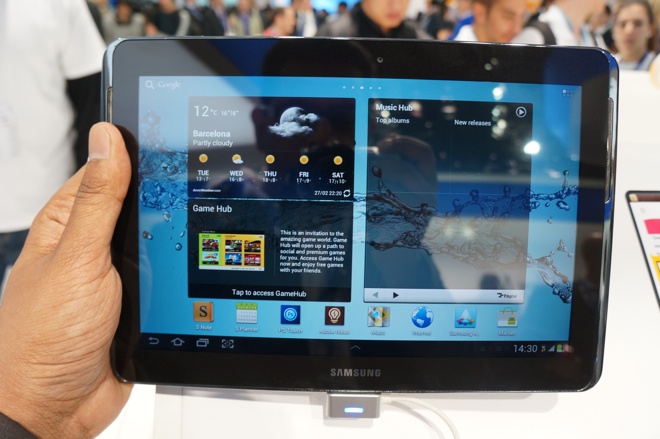
Until recently, talk about BYOD (bring-your-own-device) policies has centered on managing the juggernaut of employee smartphones in the workplace. But with tablet sales skyrocketing, a new trend is weaving itself into workplace mobility conversations: BYOT (bring-your-own-tablet).
The BYOT concept poses significant challenges to IT departments. Tablet devices are popular workplace productivity tools, especially in enterprise environments. In fact, many newly released tablet devices and software updates (e.g. Android’s Ice Cream Sandwich update, BlackBerry Playbook 2.0 update, and the new iPad) include enterprise-friendly features, making it relatively easy for employees to leverage personal devices for business functions.
So as scores of employees head off to work with an increasingly diverse array of tablet gadgetry, IT departments have to be prepared to manage the full scope of BYOT devices on the market – effectively safeguarding the enterprise environment from malicious applications and the unauthorized use of company data.
Developing an Enterprise BYOT Strategy
The proliferation of tablets in enterprise environments makes the development of a BYOT strategy a fundamental part of a proactive and robust IT agenda. Companies that delay implementing a BYOT strategy place their organizations at significant risk, so it’s important to adopt a company-wide standard policy that guides tablet use.
- Identify the Tablet Use Case: An effective BYOT strategy begins with the identification of the use case, i.e. determining why employees are bringing their tablets into the enterprise. Tablets and other mobile devices aren’t mutually exclusive. In most instances, employees who use tablets also use smartphones for email, contacts and other business functions. But when it comes to apps, tablets rule the corporate roost. So instead of being tied to an email use case, tablets are tied to an app use case (data only) – a focus for IT departments and other stakeholders who are responsible for developing the organization’s BYOT policy.
- Determine the Scope of Tablet-Based Data Access: It is critical for IT departments to know what is running on the corporate network or risk serious problems down the road. IT departments need to carefully evaluate the types of data employees are accessing via their tablets, and whether the data can be accessed outside of the company network. Since many consumers purchase tablet devices that are Wi-Fi only because they are cheaper and generally as internet accessible, it is very likely this is the case.
- Prioritize User Security: At the very least, require tablet passwords. But companies should also go beyond that and encrypt data in the event that tablet passwords are compromised. That’ll help prevent a scenario where unauthorized users access and distribute sensitive corporate information. In the same way that the company’s laptop users leverage VPN (Virtual Private Network) access, BYOT users should leverage a VPN or a secure network that allows for secure, remote access to the company’s central network.
- Standardize Company Application Policies: Since tablets are used primarily for applications, employee use of personal tablets dramatically increases the company’s exposure to rogue apps capable of compromising the security of company data and other IT assets. One of the smartest ways to manage the applications that BYOT devices introduce to the company network is to maintain a company app store – a central, virtual location that serves as the only place employees can download apps that are deployed on the company network. Although employees can suggest apps for inclusion in the company store, applications are strictly prohibited from the company network until they have successfully navigated the approval process.
- Implement a Device Management Solution: Enterprise Device Management solutions like MobileIron, Boxtone, or BlackBerry give companies and IT departments the ability to manage their BYOT strategy over the long-term. Featuring powerful capabilities designed specifically for enterprise mobility environments, today’s leading Device Management solutions can support both tablets and smartphones, offering corporations a cost-efficient way to manage email and data use cases. When you determine the scope of tablet use, a DM solution also gives IT the ability to exert greater control to monitor and manage the tablets on the corporate network.
Corporate employers shouldn’t expect the BYOT trend to diminish anytime soon. If anything, tablet devices will become even more ubiquitous in the workplace as manufacturers offer higher quality devices across a wider range of price points.
To ensure the proper utilization of employee-owned tablets in enterprise network environments, IT departments need to emphasize the development of a comprehensive BYOT strategy and policies now, since it’s likely that a significant number of employees are already deploying their personal tablets as workplace productivity tools.
 Don Grons is VP of Technology with Mission Critical Wireless, a leading global enterprise mobility management services provider.
Don Grons is VP of Technology with Mission Critical Wireless, a leading global enterprise mobility management services provider.
Top photo via Devindra Hardawar/VentureBeat
VentureBeat's mission is to be a digital town square for technical decision-makers to gain knowledge about transformative enterprise technology and transact. Learn More

